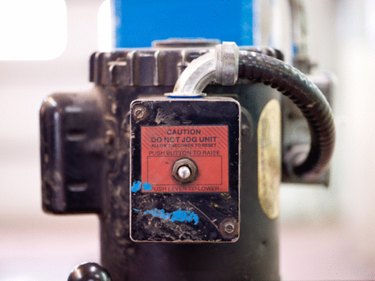Things You'll Need
Screwdriver
12-gauge stranded copper wire
Copper or brass grounding rod with fastener
Wire strippers
Mallet
Sandpaper, wire wool or wire brush

Generally, any device with a three-pronged plug needs to be inserted into a three-pronged outlet to be grounded. The National Electrical Code--and often local buildings codes--mandates that the frame and exposed metal parts of a generator be connected to an earth ground. Therefore, check with your building department to see what rules apply to generators. You can ground a portable generator by installing a grounding rod.
Step 1
Identify the grounding lug on the generator frame. The lug is usually a screw or a pole labeled "GRND" or something similar. Unscrew it by turning counterclockwise with the screwdriver.
Video of the Day
Step 2
Attach the stranded copper wire to the grounding lug by wrapping exposed copper strands around the fastener and tightening the screw over the strands. If the copper wire isn't stripped, strip off enough plastic with the wire strippers so there's sufficient bare metal for the wire connection.
Step 3
Drive the grounding rod into the ground as far as you can, using the mallet. Leave the tip and the fastener exposed. If the grounding rod, sometimes called the electrode, is corroded, clean off oxidization with sandpaper, wire wool or a wire brush.
Step 4
Strip the plastic sheathing from the wire at the end and fasten the wire to the rod by unscrewing the fastener and slipping in the bare strands to make a bare metal connection. Tighten the screw.
Tip
Grounding helps prevent electrical shocks and static electricity.
Video of the Day